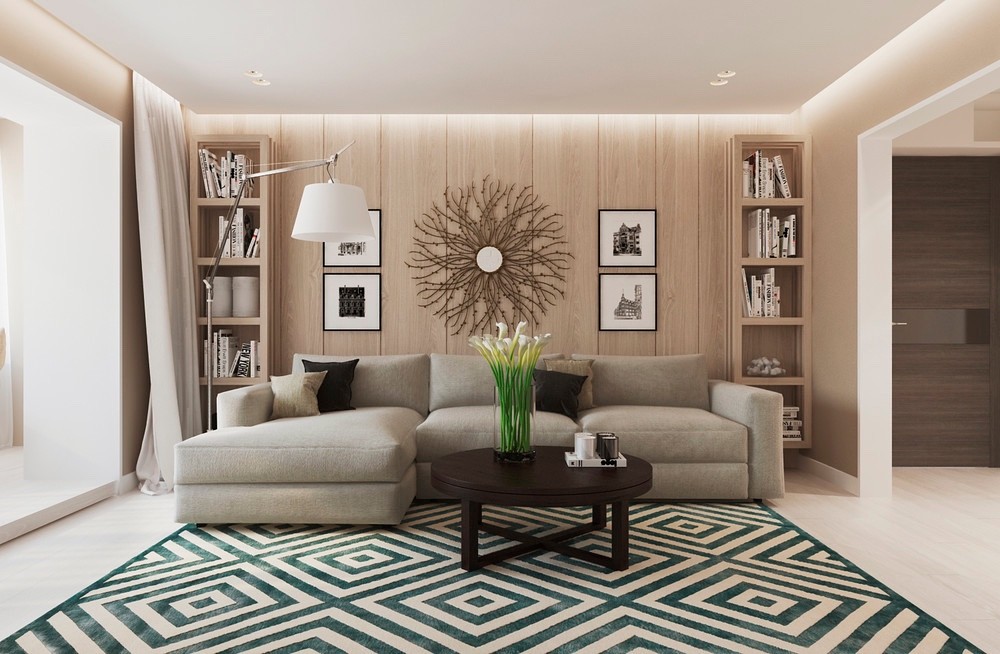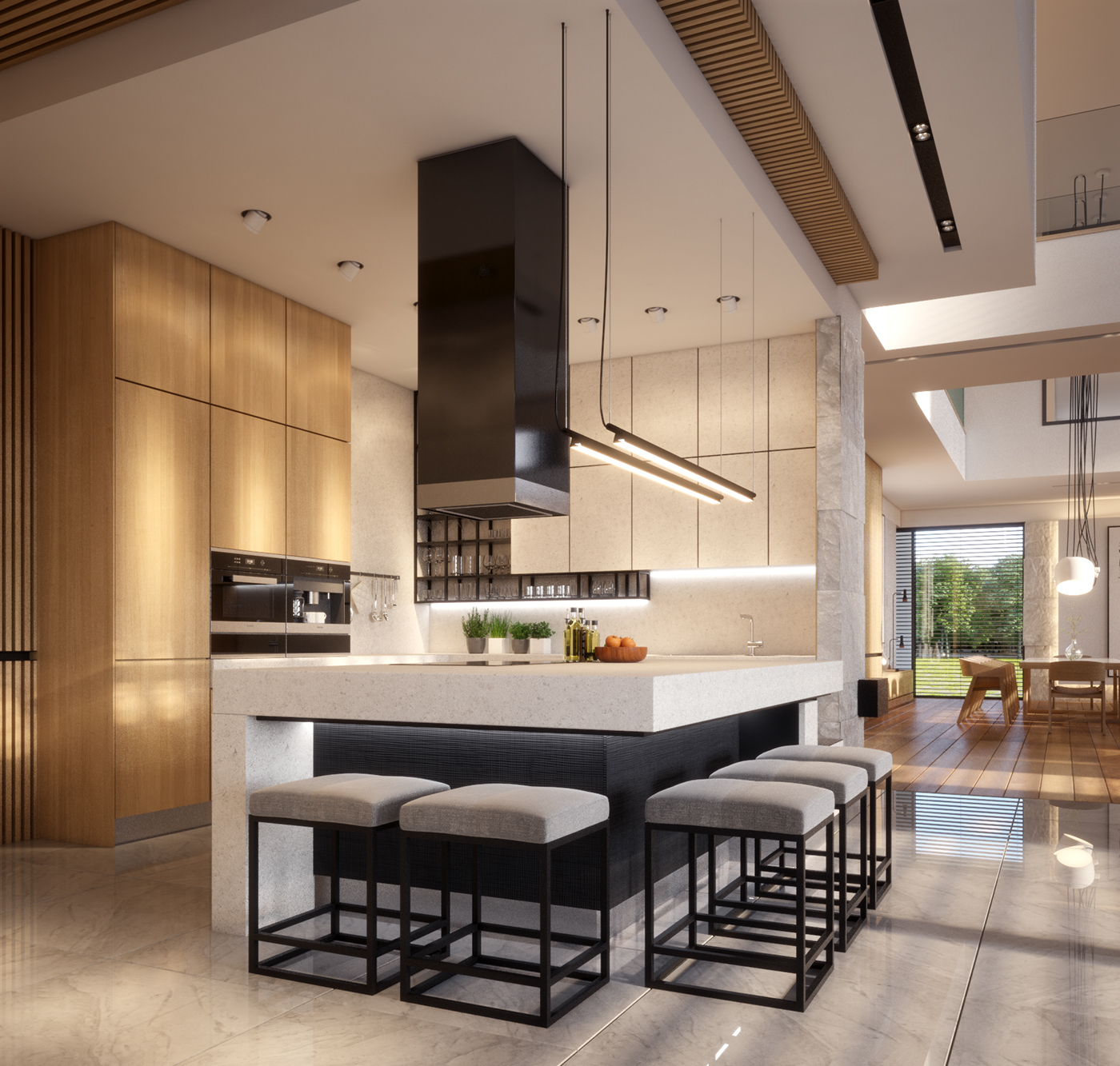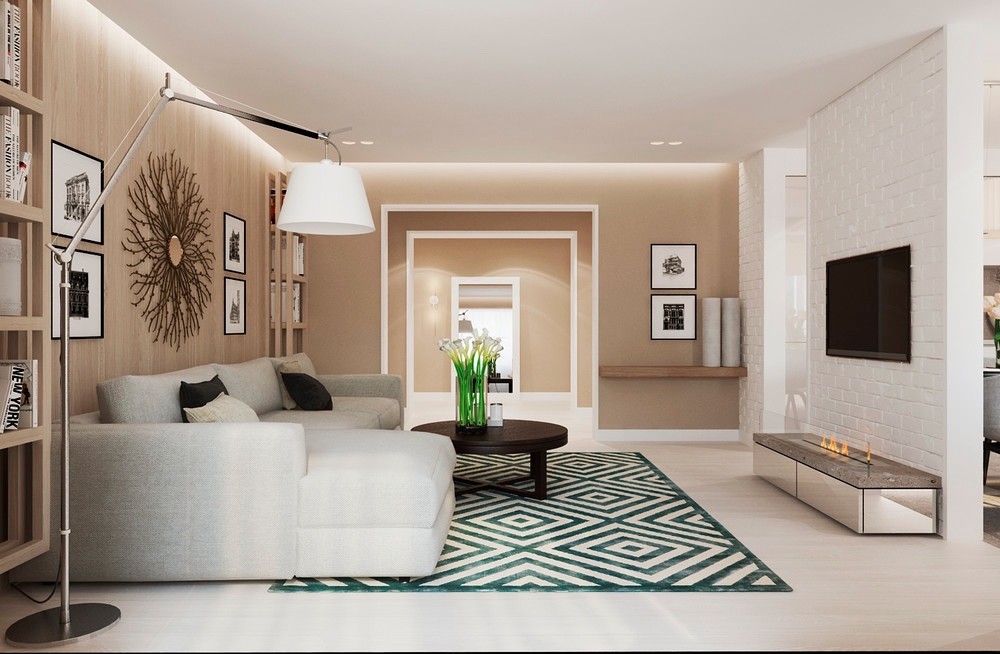Welcome to the world of warm modern interior design, where elegance meets comfort, and contemporary aesthetics blend seamlessly with cozy vibes. As a passionate interior designer with years of experience, I’ve discovered that our homes should not only reflect our personality but also be a sanctuary that embraces warmth. In this guide, we’ll explore the nuances of warm modern design, showcasing how you can transform your living space into a haven of comfort and style.
Understanding Warm Modern Interior Design
Warm modern interior design is an aesthetic that harmoniously marries modern minimalism with inviting elements. It emphasizes clean lines, functional spaces, and a palette enriched with warm tones and textures. This design style invites you to enjoy your surroundings while exuding a sophisticated charm.
The Foundations of Warm Modern Design
- Color Palette: Soft hues such as taupe, beige, and warm whites, accented with earthy tones.
- Materials: A mix of natural materials like wood, stone, and textiles to enhance warmth.
- Furniture: Contemporary furniture with organic shapes, featuring inviting fabrics and finishes.
- Lighting: Layered lighting that creates ambiance, including warm LED fixtures and natural light sources.

Key Characteristics of Warm Modern Interior Design
| Characteristic | Description |
|---|---|
| Minimalistic Approach | Focusing on functionality while avoiding clutter. |
| Warm Color Schemes | Using colors that evoke warmth and comfort. |
| Natural Materials | Incorporating wood, stone, and textiles for a tactile experience. |
| Cozy Textures | Adding layers through rugs, curtains, and cushions. |
| Open Spaces | Creating a flow between rooms for a welcoming atmosphere. |

Essential Elements of Warm Modern Interior Design
Color Schemes that Charm

Choosing the right color palette is the cornerstone of warm modern interior design. In my experience, colors can significantly influence the mood of a space. Opt for a base of warm neutrals like cream, light gray, and taupe. Accentuate these with pops of muted tones like olive green, burnt orange, or mustard yellow to create visual interest while maintaining warmth.
Examples of Warm Color Combinations

- Warm White + Soft Gray + Olive Green
- Beige + Terra Cotta + Cream
- Muted Yellow + Light Brown + Charcoal Gray
Material Choices: The Heart of Comfort

Materials play a crucial role in establishing warmth. Natural materials are at the forefront of this design style. For instance, hardwood floors add a timeless appeal, while plush area rugs bring softness underfoot. When selecting furniture, look for pieces that feature organic shapes and textures, such as those made from reclaimed wood or upholstered in soft fabrics.
Recommended Materials

- Wood: Oak, walnut, and reclaimed wood are excellent choices.
- Textiles: Linen, cotton, and wool fabrics enhance tactile quality.
- Stone: Marble and granite for countertops and accents.
Furniture Selection: Modern Yet Inviting
Your furniture should be both stylish and comfortable. It’s essential to choose pieces that are not only functional but also invite relaxation. Opt for sofas with plush cushions and coffee tables made from warm woods. In my own home, I have a sofa that combines a sleek silhouette with generous seating, making it the perfect spot for cozy gatherings.
Furniture Essentials for Warm Modern Design
- Sectional sofas with warm upholstery
- Round wooden dining tables to soften lines
- Textured accent chairs for added comfort
Lighting: Creating Ambiance and Warmth
Lighting is often the unsung hero of interior design, yet it can dramatically alter the feel of a space. A layered lighting approach is vital in warm modern interior design. Utilize a combination of ambient, task, and accent lighting to create a warm glow that enhances the cozy atmosphere.
Types of Lighting to Consider
- Warm LEDs: Replace cool-toned bulbs with warm white options.
- Floor lamps: Use them in corners to create intimate reading nooks.
- Pendant lights: Choose fixtures with soft, diffused light to illuminate dining areas.
Textiles: Adding Layers of Warmth
Textiles are an easy way to introduce softness and warmth into your space. Layering different fabrics adds depth and coziness. Use throw blankets, cushions, and curtains in various textures and patterns to create an inviting environment.
Textile Tips for Warm Modern Design
- Incorporate various textures: Mix knitted throws with silky cushions.
- Use natural fibers: Cotton and linen are breathable and add a relaxed feel.
- Choose warm colors and patterns: Look for earthy tones and subtle patterns for depth.
Warm Modern Design in Different Spaces
Living Room: The Heart of the Home
The living room is where we gather to connect and unwind. In warm modern design, aim for a layout that invites conversation and relaxation. Use modular seating arrangements to create a sense of openness while still being intimate.
Living Room Design Tips
- Choose a focal point: Whether it’s a fireplace or a piece of art, create a visual anchor.
- Incorporate natural elements: Bring in plants or natural wood elements for added warmth.
- Use mirrors strategically: Reflect light and create the illusion of a larger space.
Bedrooms: A Cozy Retreat
Your bedroom should feel like a sanctuary. To achieve a warm modern look, opt for soft bedding in neutral tones and layered rugs for comfort. Incorporate soft lighting and personal touches that reflect your style.
Bedroom Styling Ideas
- Invest in high-quality bedding: Egyptian cotton or bamboo sheets feel luxurious.
- Add a reading nook: A cozy chair and a small side table can make a great spot for relaxation.
- Personalize with decor: Use photographs, artwork, and sentimental items to tell your story.
Bringing the Outdoors In
The connection between indoor and outdoor spaces is vital in modern design. Utilizing large windows, sliding glass doors, and indoor plants can help merge these realms. In my home, I have found that having a few strategically placed plants not only purifies the air but also enhances the overall aesthetic.
Plants and Greenery in Warm Modern Design
- Indoor plants: Use low-maintenance options like snake plants or pothos.
- Herb gardens: Small herb pots in the kitchen can add freshness and functionality.
- Succulents: Great for adding a modern touch with minimal upkeep.
Pros and Cons of Warm Modern Interior Design
| Pros | Cons |
|---|---|
| Creates a cozy atmosphere | Can require a higher upfront investment in quality materials |
| Timeless appeal | May require more maintenance for textiles and plants |
| Versatile and adaptable style | Finding the right balance can be subjective and may require experimentation |
Conclusion: Your Warm Modern Journey
Warm modern interior design is more than just decor; it’s a way to create a nurturing and inviting space that feels like home. By focusing on warm colors, natural materials, and layered textures, you can transform your living environment into one that celebrates comfort without sacrificing style. Remember, decorating your space should be a personal journey. Embrace your creativity and let your home reflect the warmth you wish to share.
FAQs About Warm Modern Interior Design
What is warm modern interior design?
Warm modern interior design combines contemporary elements with warm tones and textures to create inviting, functional spaces that promote comfort and relaxation.
How can I incorporate warm colors into my home?
Start with a neutral base and add warm color accents through decor items like cushions, throws, and artwork. Experiment with earthy tones and muted colors for a sophisticated look.
What materials are best for warm modern design?
Natural materials like wood, stone, and textiles such as linen and cotton are ideal for creating warmth and a cozy atmosphere in modern interiors.
How can I make my living room more inviting?
Utilize comfortable furniture, warm lighting, and layered textiles. Incorporate personal touches and natural elements to enhance the inviting feel.
Can I achieve a warm modern look on a budget?
Yes! Focus on small changes like painting walls in warm tones, using second-hand furniture, or adding simple decor items that reflect the style.
What are some popular warm modern design trends?
Popular trends include the use of organic shapes in furniture, sustainable materials, and a focus on creating multifunctional spaces that prioritize comfort and usability.